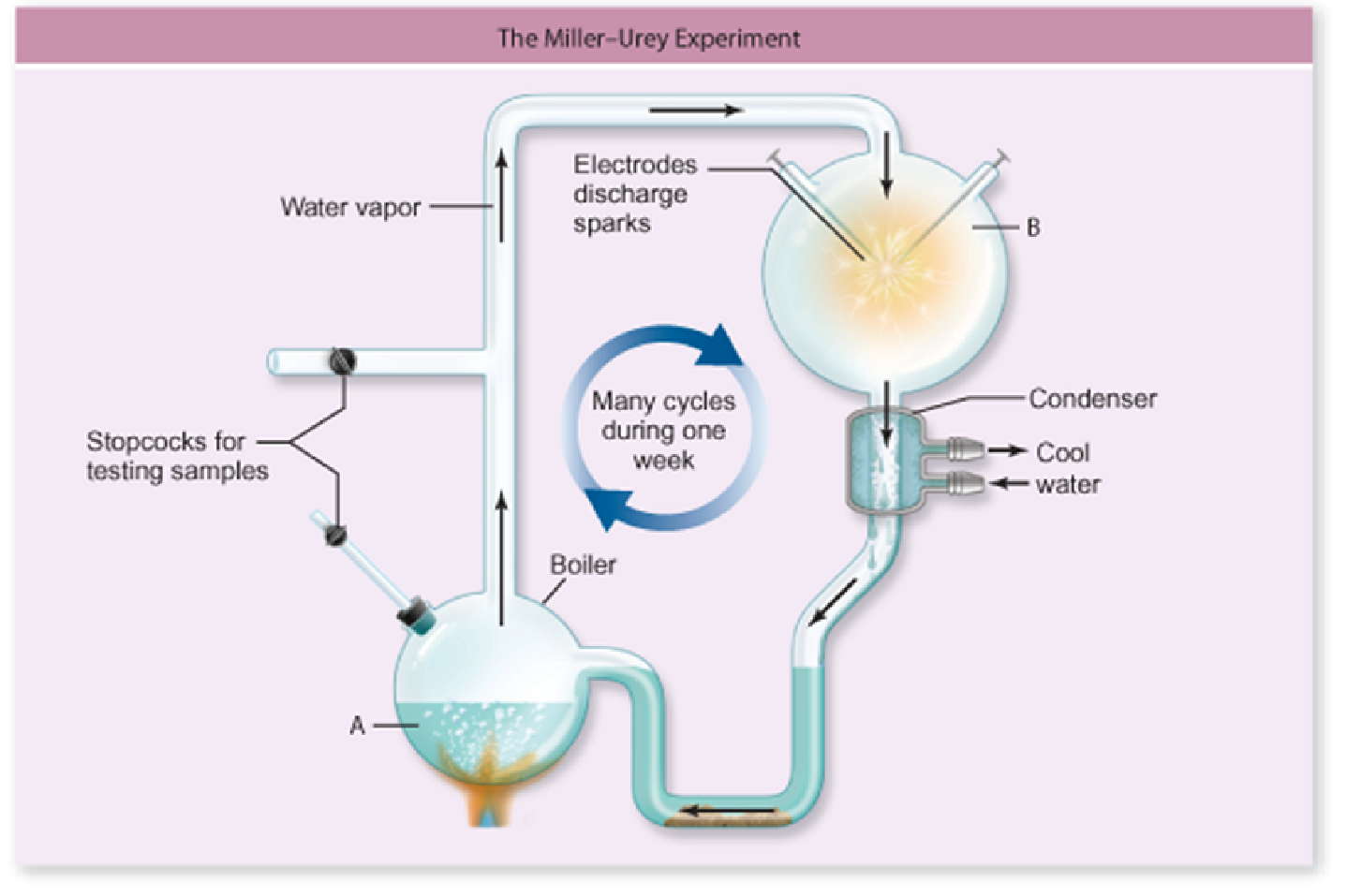What do H2O, NaCl, CO2, and HCl all have in common?
A. All are inorganic.
B. All are solutes.
C. All are salts.
D. All are gases.
E. All are acids.
Answer: A
You might also like to view...
The apparatus in the figure was used by Stanley Miller and Harold Urey to study the origin of life on Earth. What compound was excluded from the apparatus so that it would form a reducing atmosphere?

A. CO2
B. O2
C. NH3
D. H2
E. H2O
Suppose you discover a mouse that has spiky fur instead of the usual soft fur. You notice that this trait seems to be present only in males. To investigate this pattern, you cross a spiky-fur male with a soft-fur female, and find that all the F1 progeny of both sexes have soft fur. You then interbreed the F1 and observe that all the F2 females have soft fur, but 1/4 of the F2 males have spiky fur. You conclude that the spiky allele is
A) an X-linked recessive. B) Y-linked. C) autosomal recessive with sex-influenced expression. D) an X-linked dominant. E) an autosomal dominant with sex-influenced expression.
A small seed may grow into a very large tree. As the tree grows, it adds a great deal of mass. Where does most of this mass come from?
A) air B) soil C) water D) sunlight
Which of the following is not an autotroph?
a. yeast b. oak tree c. cyanobacterium d. algae e. grass